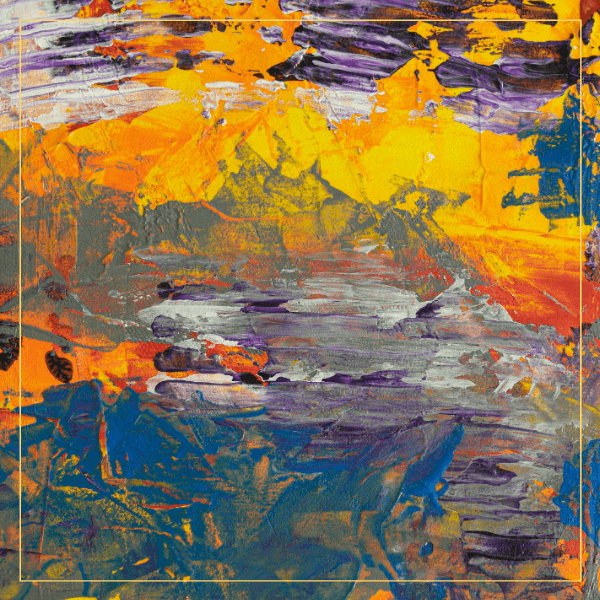Golden pieces
- 11/05/2021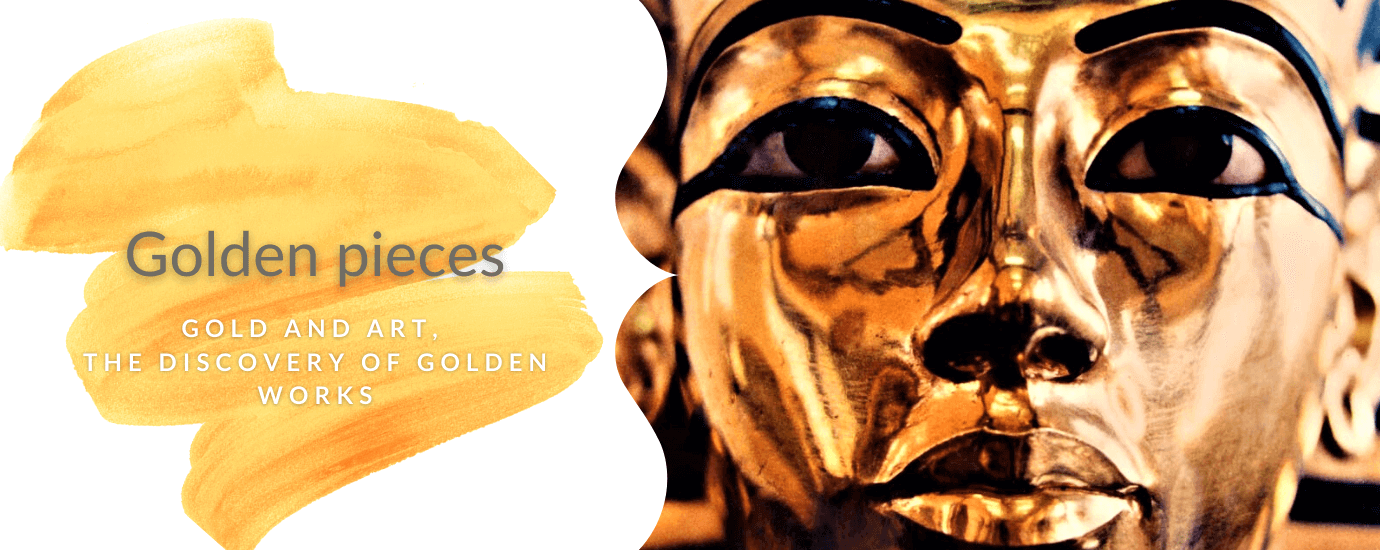
In Ancient Egypt, gold is the color of Gods and Pharaohs, as it doesn’t oxidize, it symbolizes immortality.
Just the tomb of Tutankhamun contained nearly a ton of gold, even though it is the less imposing one among the Valley of the Kings sepulchers.
Many signs of gold leaf uses – both on paintings and sculptures - are found on sarcophagus and burial chambers in the very heart of pyramids.
Rome, along with the pre-Columbian Americas, pile up effigies, statuettes and diverse objects in massive gold.
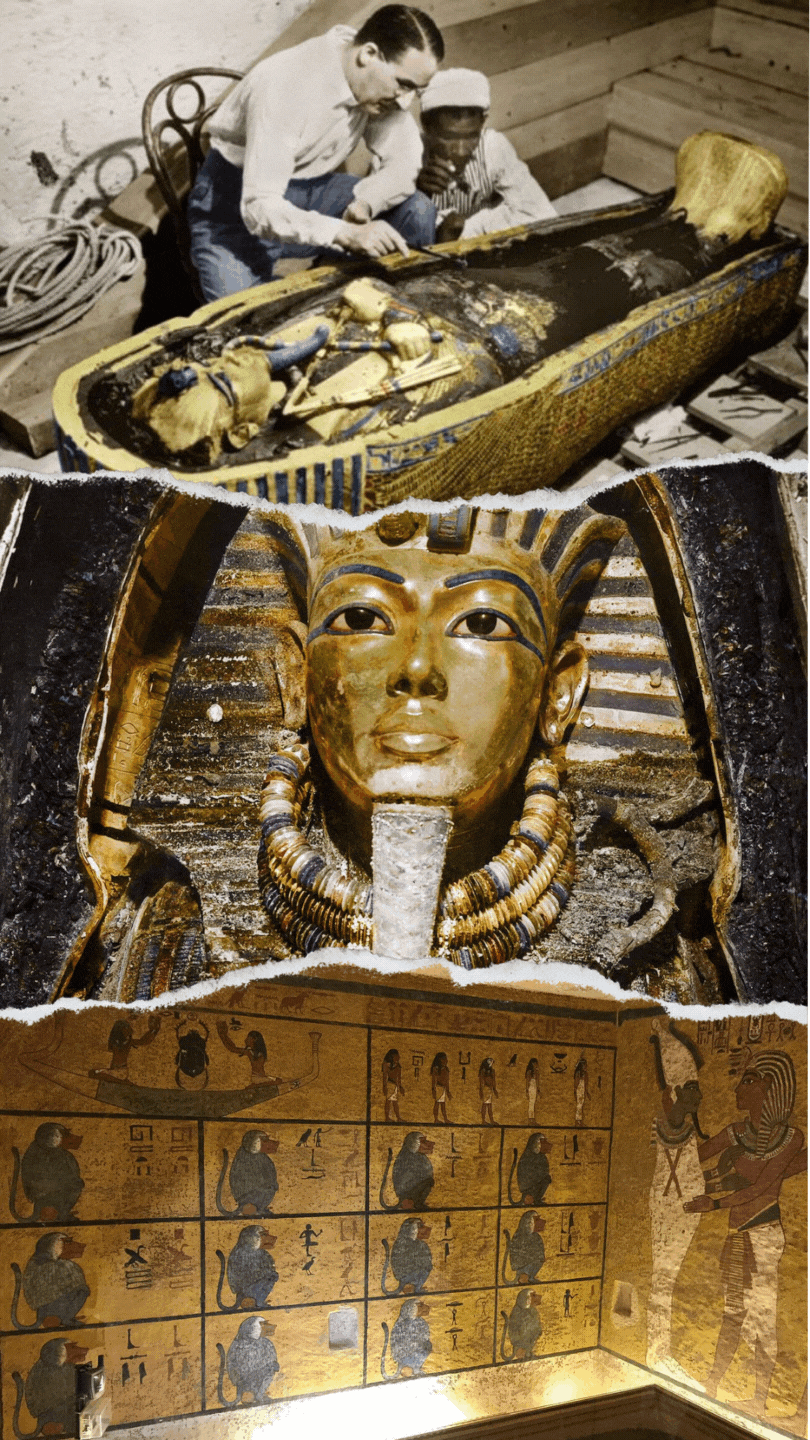
The precious Metal, other than sustaining wars, adorns statues and more particularly the famous Chryselephantine sculpture.
As their name indicates it (chrysos means gold and elephantinos ivory) these statues mingle ivory for naked human body parts and gold for clothing, armors and accessories.
Two of the most beautiful chryselephantine sculptures, the Athena Parthenos and the Statue of Zeus at Olympia made by Phidias, are destroyed during middle Ages wars because of their high value.
In the fifth century illuminated manuscripts are turned into pieces of art through the use of gold leaf.
From Constantinople to Ireland via Italy , these writings , whose texts are illustrated and decorated on the initials or the margins, are embellished with silver and gold leaf through an extremely thorough work.
GOLD AND ORNAMENTS
In the Middle Ages, the gold leaf is used for Christian artworks and paintings.
The iconographic and aesthetic role of gold is crucial since it carries a strong symbolic depending on its place in the image.
The yellow metal is particularly used for aureoles, characteristic of saints, or to golden the sky, which gave its name to this painting style:
the "golden background" which refers to this technique.
At that time, the name of Primitives is given to Italian painters working on wood panel, painting very straight characters in front of a gold background.
This technique is at its peak in the fourteenth century in Italy and the Byzantine Empire.
After the Renaissance and the emergence of major Italian cities, art slides slowly towards the bright aesthetics of the Baroque style where golden ornaments still find a place of choice, just like in Versailles or the Sanssouci castle in Berlin.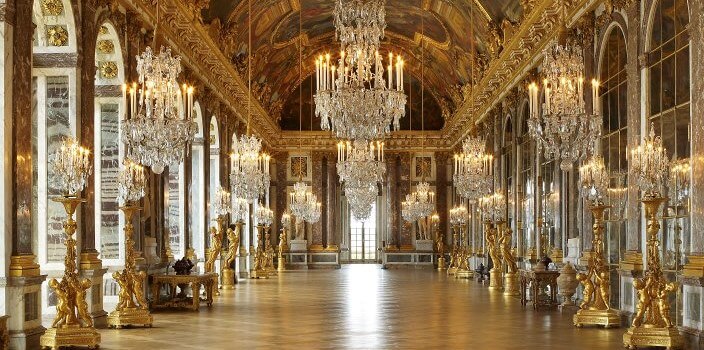
Versailles castle in France
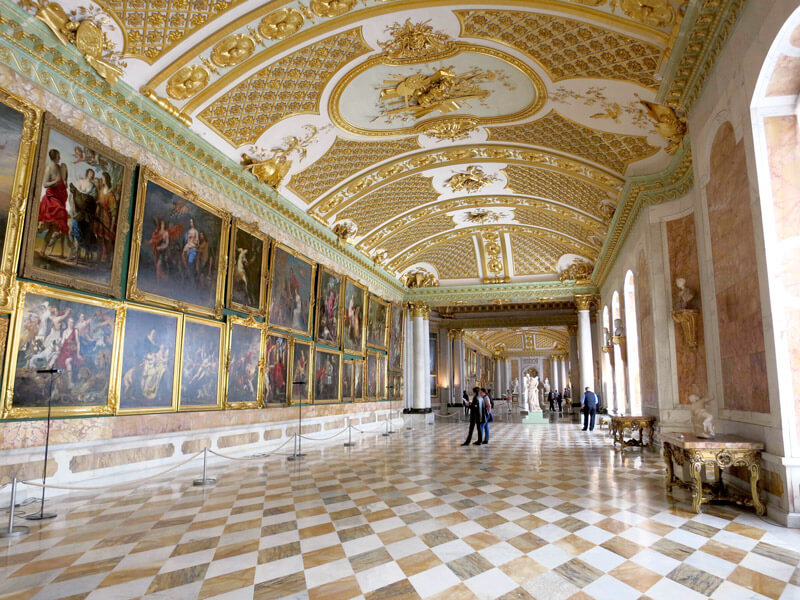
Sanssouci castle in Berlin
CONTEMPORARY GOLD
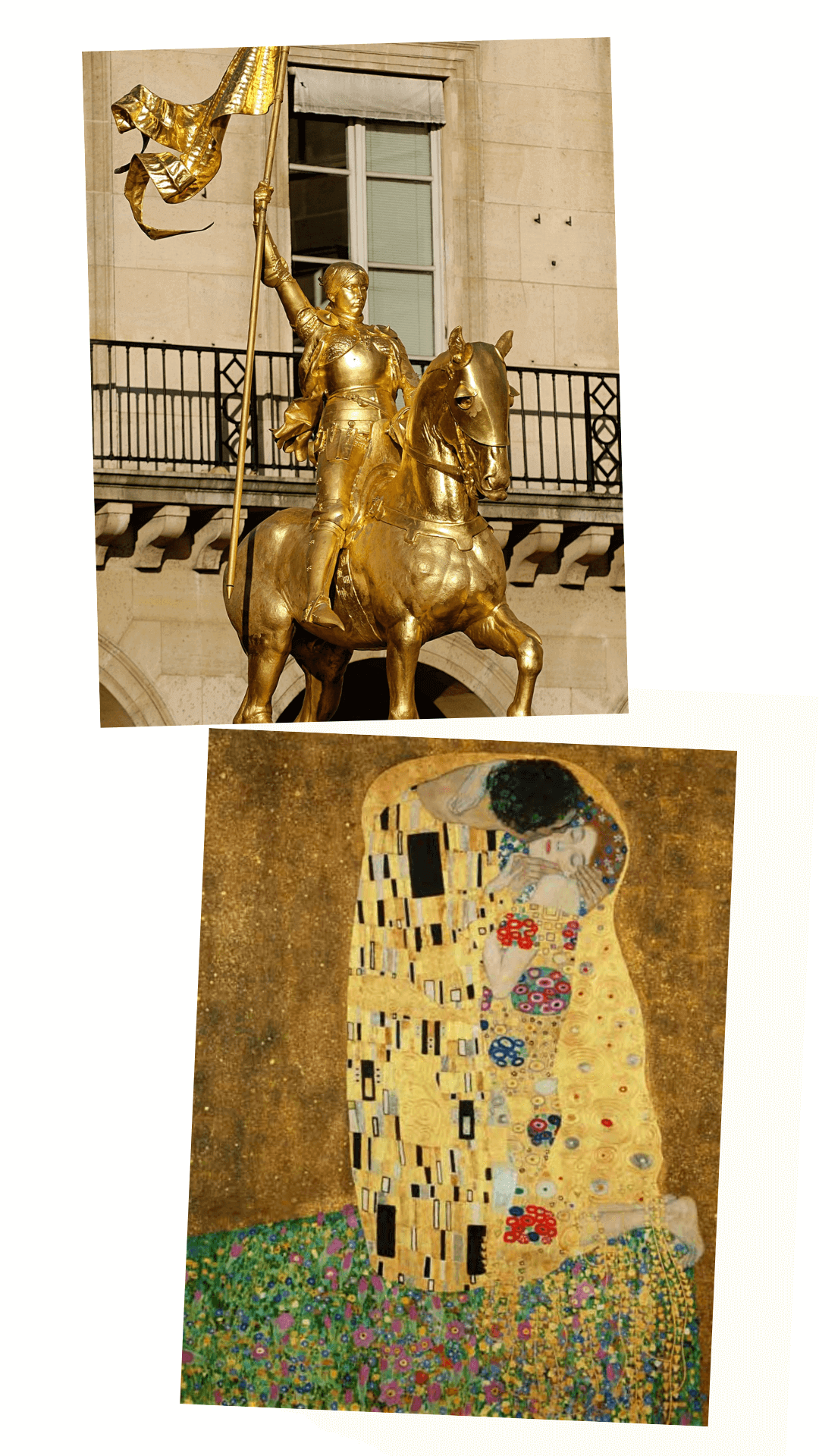
The equestrian statue of Jeanne d’ Arc in 1874 created by Emmanuel Frémiet is a perfect example.
More recently in the modern art world, many artists have used gold and the gold leaf in their paintings.
One must of course evoke Gustav Klimt (1862-1918) who paints during its «Golden Cycle" a series of artworks made with gold leaf which are today some of the most expensive paintings in the world.
In 2006, $135 millions were necessary to buy Adele Bloch-Bauer I (1907) and over $327 millions the same year for a set of five works called "golden".
The Monogolds (1959-1962) by Yves Klein are among the contemporary artworks that best reflect the artists fascination for gold.
Some of his paintings are entirely covered with gold leaf, others play on shifting effects.
Ci-gît l'espace (1960) with its blue circle and flowers give a perfect sense of shining to the gold metal.
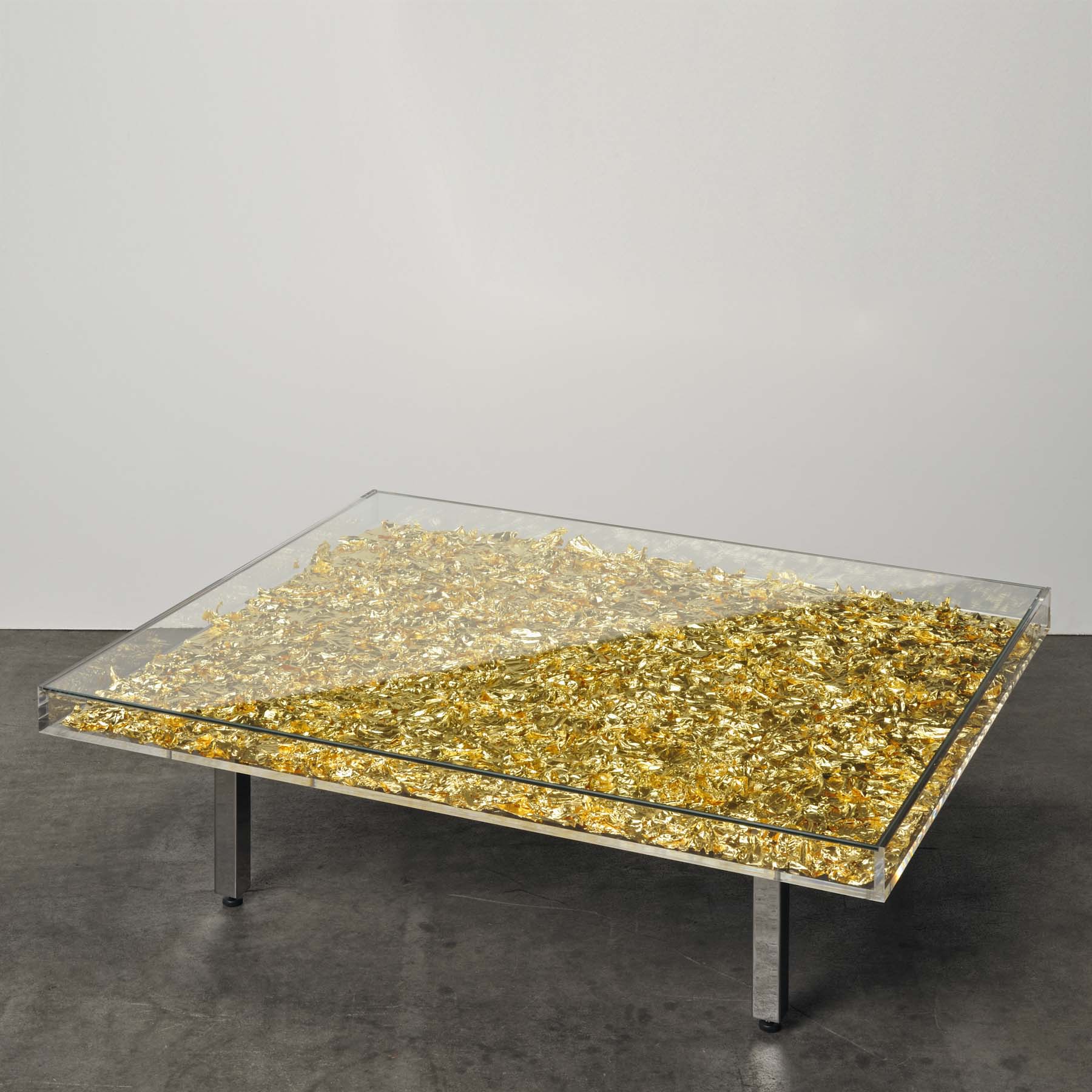
Yves Klein, 1928 - 1962, Table Monogold
ZINC, LEAD AND GOLD
François-Régis Lemonnier whose work is primarily based on the recovery of materials such as sand or zinc, uses the gold leaf to sublimate his works.
Lingering a deep look on the human being that he loves to represent in marine worlds or mountainous landscapes, his thoughts place the mankind in the universality of its environment.
Far from representation and realism, the paintings by François-Régis Lemonnier are an open window to the world, a huge world, swallowing an increasingly small, almost invisible man.
THE NEO-COLLECTOR'S GUIDE
Everything you always wanted to know about the art market but were afraid to ask!
The art market often appears to be a domain reserved for a privileged few...
This is not true: accessible to all, the art market is only waiting for its new collectors.
For those who still have a doubt :
Here are the answers to the questions commonly asked!
What is a work of art?
What is the purpose of art?
What is the purpose of a certificate of authenticity?
What should you look out for when buying a work of art?


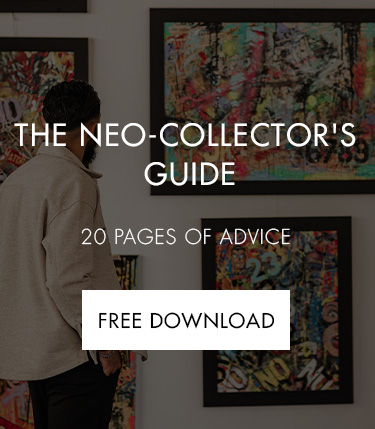
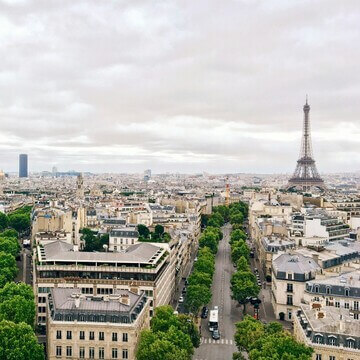


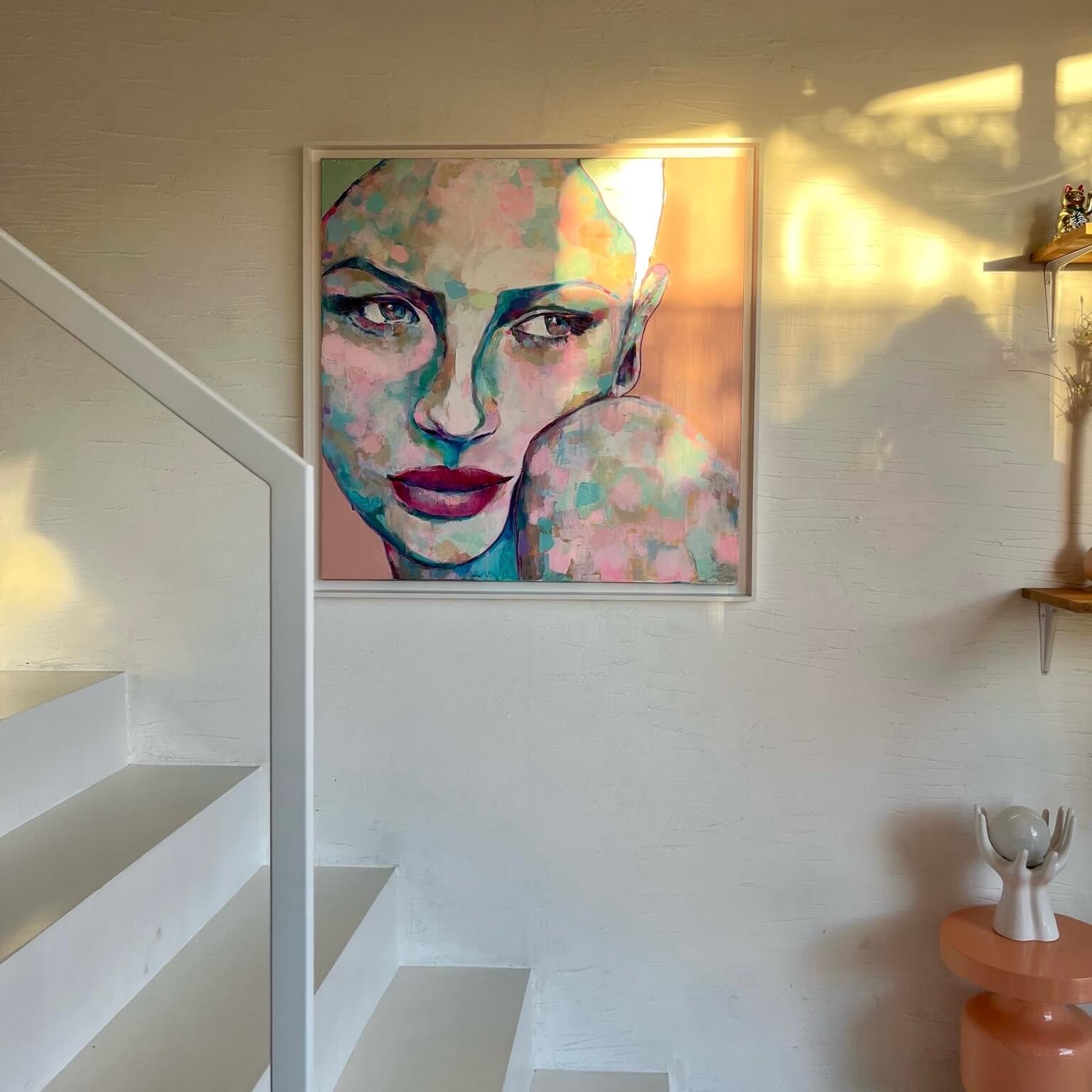
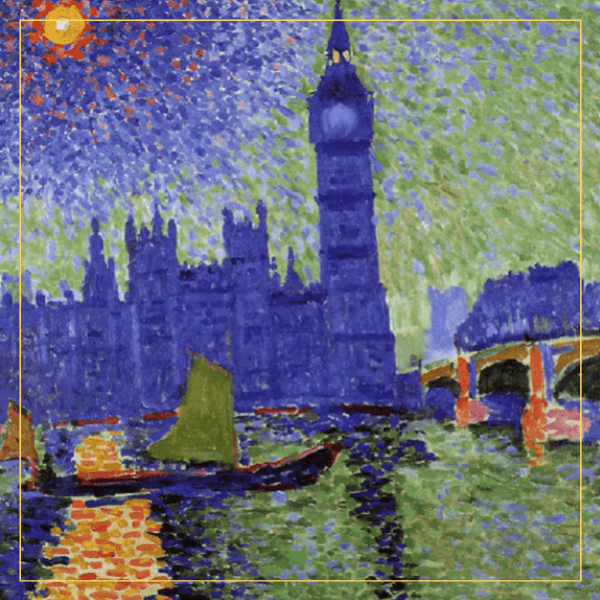
.png)
